 Appropriate Personal Protective Equipment (PPE) can help protect your greatest asset – your employees, minimize injuries, and lower your Contractors Insurance costs.
Appropriate Personal Protective Equipment (PPE) can help protect your greatest asset – your employees, minimize injuries, and lower your Contractors Insurance costs.
The idea of wearing PPE is not new. It dates as far back as ancient times when soldiers wore protective head and face gear and body armor during battle. However, it wasn’t until the construction of the Golden Gate Bridge in the mid-1930s that PPE was required on a large-scale construction project.
The industry norm at the time was that one worker was expected to die for every million dollars spent on a construction project. At a cost of $35 million, that meant 35 workers were expected to die while constructing the Golden Gate Bridge.
Joseph Strauss, the chief engineer on the project, refused to accept that and made safety a priority, spending $130,000 on an innovative safety net and requiring the use of PPE such as fall protection safety belts, glare-free goggles, and hard hats. A total of eleven – not 35 - workers lost their lives on that project and ten of those fatalities occurred during a single accident when a 5-ton work platform broke off and fell through the safety net.
The use of PPE continued to be optional on most construction sites for several decades until the creation of OSHA in 1971. Today, OSHA requires employers to protect workers from workplace hazards that can cause injury or illness, including providing and requiring the use of appropriate PPE.
Determining Appropriate PPE
The first step to determining what PPE is needed is to perform a hazard assessment of the worksite. A few common hazards include the following:
- Sharp edges
- Falling objects
- Flying sparks
- Fluctuating temperatures
- Chemicals
- Noise
The next step is to determine the appropriate types of PPE needed to protect workers from those hazards. OSHA recommends exceeding minimum standards. PPE should fit properly and be well-maintained.
Employees must also be trained in the proper use of PPE, including the following:
- When PPE is necessary
- What PPE is necessary
- How to properly put on, take off, adjust and wear the PPE
- The limitations of the PPE
- Proper care, maintenance, useful life, and disposal of PPE
Training must be documented, and if a previously trained employee is not “demonstrating the proper understanding and skill level in the use of PPE,” they should receive additional training.
Types of Protection
The following are types of protection typically needed at construction sites:
- Head Protection – Construction workers should wear hard hats when there is a potential for objects falling from above, bumps to the head from fixed objects, or accidental head contact with electrical hazards. Those hats should be inspected regularly and replaced as needed.
- Eye and Face Protection – Construction workers should wear safety glasses or face shields when exposed to any electrical hazards and when they are in danger of having flying particles get in their eyes. For example, during welding, cutting, grinding, and nailing.
- Hearing Protection – Construction workers should wear earplugs or earmuffs when exposed to loud noises, such as around the use of chainsaws or heavy equipment.
- Foot Protection – Construction workers should wear safety-toed footwear that has slip-resistant and puncture-resistant soles.
- Hand protection – Construction workers should wear gloves that fit snuggly and wear the right gloves for the job. For example, heavy-duty rubber gloves for concrete work, welding gloves for welding, and insulated gloves and sleeves when exposed to electrical hazards.
Use Insurance as Your Safety Net!
Just like the safety nets used during the construction of the Golden Gate Bridge, the right insurance can act as a safety net when - despite all of your efforts - an accident does occur.
The independent agents at American Insuring Group specialize in Contractors Insurance. We work hard to get you the right insurance protection at the best possible price because we compare rates and coverage among many competing providers.
Give us a call at (800) 947-1270 or (610) 775-3848 or connect with us online.



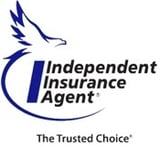
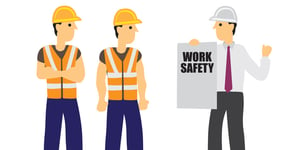 Most contractors understand that fewer workplace injuries create lower employee turnover, higher employee morale, lower
Most contractors understand that fewer workplace injuries create lower employee turnover, higher employee morale, lower 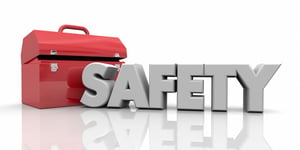 We often discuss improving worksite safety to lower
We often discuss improving worksite safety to lower 
 The construction industry is notorious for being filled with potential hazards that cost construction companies billions of dollars in higher
The construction industry is notorious for being filled with potential hazards that cost construction companies billions of dollars in higher  More than four years after Governor Tom Wolf signed the Pennsylvania Medical Marijuana Act into law, the implications of the law on construction site safety and
More than four years after Governor Tom Wolf signed the Pennsylvania Medical Marijuana Act into law, the implications of the law on construction site safety and  If you want to lower
If you want to lower  Contractor Insurance is required to protect your assets and your business, whether you’re a one-person independent contractor or the owner of a construction company.
Contractor Insurance is required to protect your assets and your business, whether you’re a one-person independent contractor or the owner of a construction company. Want to know how to lower your
Want to know how to lower your 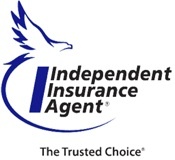 Another way to save on Contractor Insurance is to work with an independent agent – like those at American Insuring Group – who will compare the cost and quality of insurance coverage among several different competing insurance companies.
Another way to save on Contractor Insurance is to work with an independent agent – like those at American Insuring Group – who will compare the cost and quality of insurance coverage among several different competing insurance companies.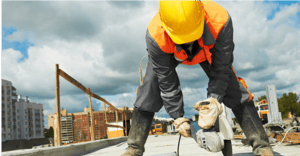 Every business comes with its share of risk, and a contracting business is no different. If anything, contractors face more than the average risk. Fortunately, there are things you can do to minimize or even eliminate many of those risks. Plus,
Every business comes with its share of risk, and a contracting business is no different. If anything, contractors face more than the average risk. Fortunately, there are things you can do to minimize or even eliminate many of those risks. Plus,  Understanding these three risks, minimizing them, and having the right insurance is vital for a healthy bottom line and the success of any contracting business.
Understanding these three risks, minimizing them, and having the right insurance is vital for a healthy bottom line and the success of any contracting business.



